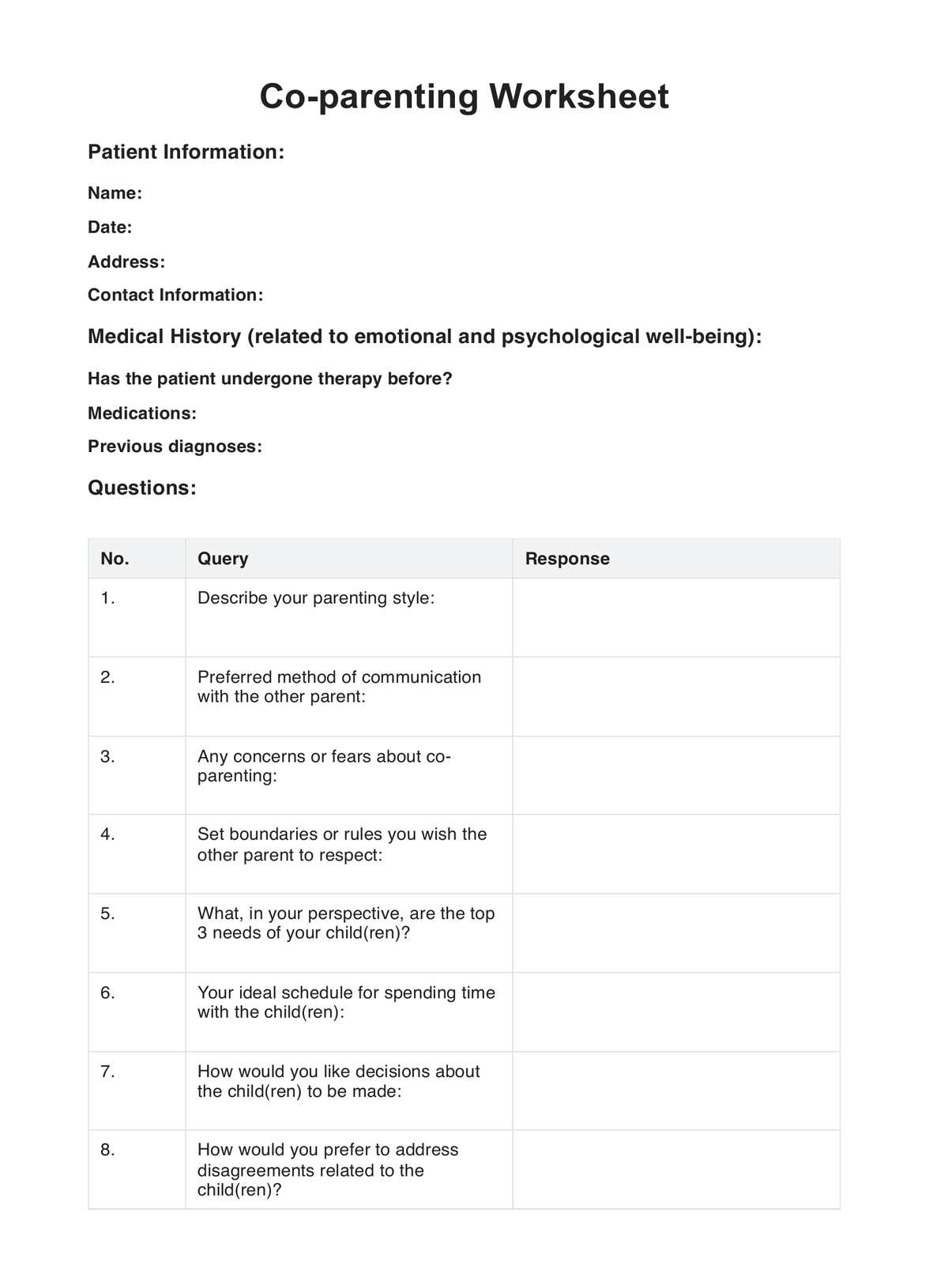A co-parenting worksheet provides structured communication, ensuring parents align on their child's routines and needs. It helps minimize misunderstandings, promotes consistent routines, and is backed by research to enhance the child's well-being.

Co-parenting Worksheets
Dive into effective co-parenting with Carepatron! Discover our comprehensive Co-parenting Worksheet and streamline shared parenting.
Use Template
Co-parenting Worksheets Template
Commonly asked questions
Carepatron prioritizes user security. All data on the platform is encrypted and follows strict privacy guidelines, ensuring your personal and child-related information remains confidential.
Absolutely! Carepatron offers resources like the Co-parenting Worksheet that professionals can use. Its features facilitate structured sessions and provide tools for effective co-parenting strategies.
EHR and practice management software
Get started for free
*No credit card required
Free
$0/usd
Unlimited clients
Telehealth
1GB of storage
Client portal text
Automated billing and online payments











